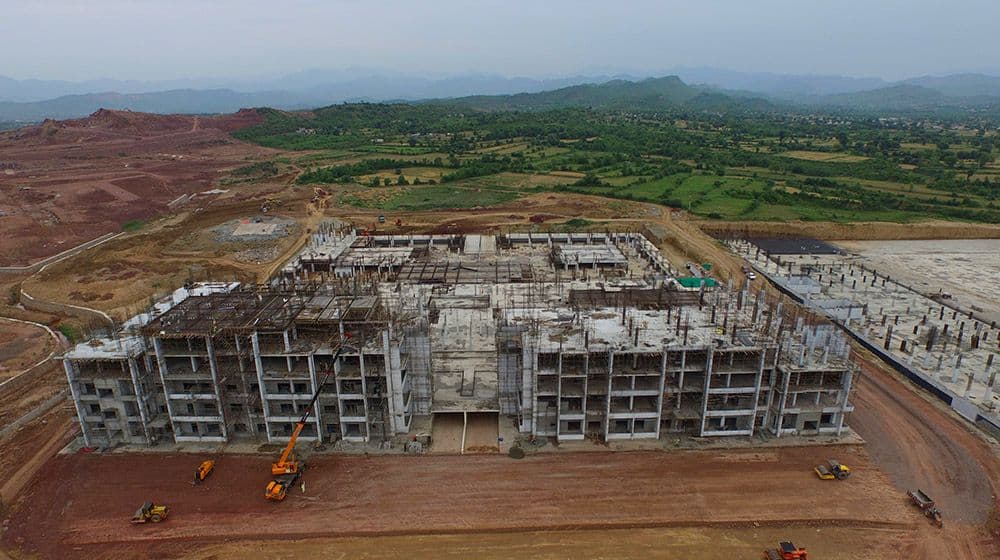ISLAMABAD: Rising Steel prices and government taxation have halted the construction of new homes nad hit badly the real estate sector.
Because of this, Cement sales dropped by 6.6% in the first nine months of FY2025, totaling 27.46 million tonnes, reflecting subdued construction activity.
Despite a slow real estate market, the national average price of a 50kg cement bag rose from Rs1,126 to Rs1,393 over two years.
In early 2023, steel bar prices reportedly surged to Rs350,000 per tonne, prompting the Association of Builders and Developers of Pakistan (ABAD) to suspend work on 300 projects across Karachi, Sukkur, and Hyderabad in protest.
The Pakistan Association of Large Steel Producers (PALSP) dismissed ABAD’s claims, stating actual prices ranged from Rs280,000 to Rs305,000 per tonne.
Currently, PALSP’s General Secretary Syed Wajid Bukhari stated that steel bar prices have eased to Rs240,000 per tonne from Rs260,000 in March 2024.
According to iron and steel trader Shamoon Baqar Ali, average-quality bars are priced between Rs220,000 and Rs230,000, while premium brands are still fetching around Rs260,000 per tonne.
Price Trends
While Pakistan has seen some encouraging economic indicators—such as a March 2025 Consumer Price Index (CPI) drop to a 30-year low of 0.7% and interest rate cuts from 22% to 12%.
Furthermore, rupee-dollar stability, manageable current account levels, and increased remittance inflows—many citizens are still unable to afford new homes or apartments due to prohibitively high construction costs.
The government has yet to take meaningful steps to bring down construction-related expenses, while speculative activity in real estate prices has further diminished buyer confidence.
Construction input costs have fluctuated over the past two years, with cement and labor charges increasing, even as steel bar prices occasionally fell.
However, these shifts have not been enough to restore momentum in residential construction or make housing more accessible.
Construction Inputs
Mr. Bukhari noted that steel bar demand remains weak. Last year’s rupee devaluation pushed prices beyond the reach of average home builders, stalling demand.
Additionally, government cutbacks on development spending and reduced construction activity have hit the steel sector hard. Legitimate manufacturers are struggling, while informal, tax-evading producers offering lower-quality products continue to operate with fewer constraints.
He also voiced concern over the International Monetary Fund’s (IMF) reported push for lower tariffs on intermediate goods.
Read More: Real Estate Market Set for Recovery After Prolonged Slump
According to Mr. Bukhari, such moves could critically undermine local industry if implemented. In high-rise construction, steel bars account for 40-45% of total costs, while in residential housing, they contribute about 20-25%.
Former ABAD southern region chairman Suffiyan Adhia said steel bar prices should have dropped to Rs200,000 per tonne by now, considering the rupee’s relative strength against the US dollar.
After reaching Rs307 per dollar in September 2023, the rupee is currently trading at Rs280.78, reducing the cost of importing raw materials like iron and steel scrap.
Declining demand is also reflected in reduced imports—iron and steel scrap imports fell to 1.7 million tonnes ($762 million) in the first eight months of FY25 from 1.81 million tonnes ($820 million) during the same period last year.
Labor costs have also seen a steady rise. According to the Sensitive Price Indicator (SPI), daily wages for skilled workers such as painters have risen from Rs1,432 to Rs1,683 over two years.
Electricians now charge Rs268 per point, up from Rs227. Due to higher import duties, demand for locally produced tiles and sanitary ware has increased.
Mr. Adhia emphasized the need for a cohesive government policy to promote affordable housing for low- and middle-income citizens.
“For most people, even owning a modest home remains out of reach as high construction expenses erode their already limited savings,” he said.
Pakistan faces a shortage of over 12 million housing units, with demand continuing to rise.
Also Read: Govt Steps Up Efforts to Combat Real Estate Tax Evasion
Remittances sent by overseas Pakistanis play a vital role in domestic consumption, particularly during religious holidays like Eidul Azha and Eidul Fitr, where they fund purchases of apartments, vehicles, and livestock, and help with charitable giving.
Analysts estimate that 50-60% of remittance flows are funneled into real estate, as expatriates look to secure their earnings through property investments.
